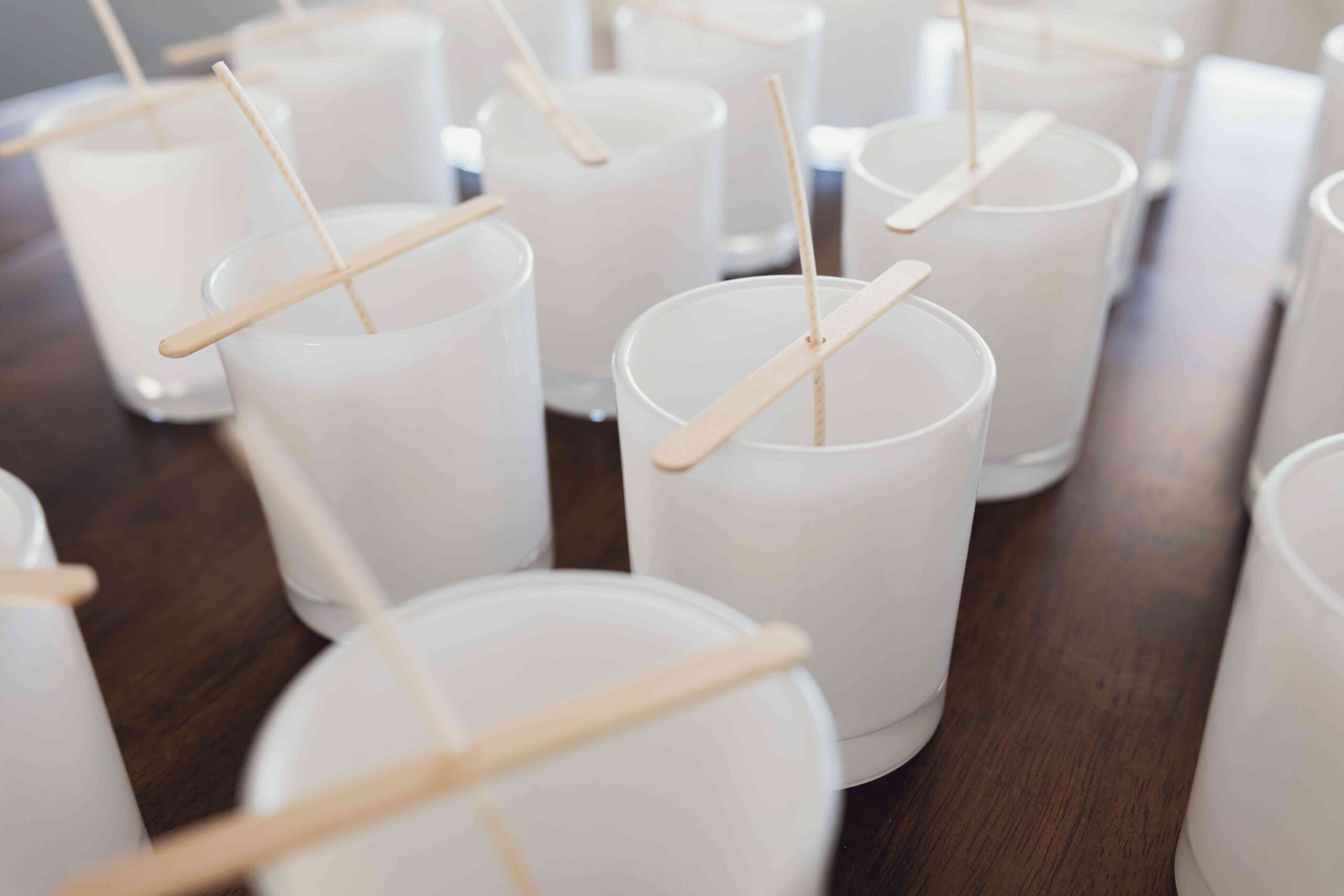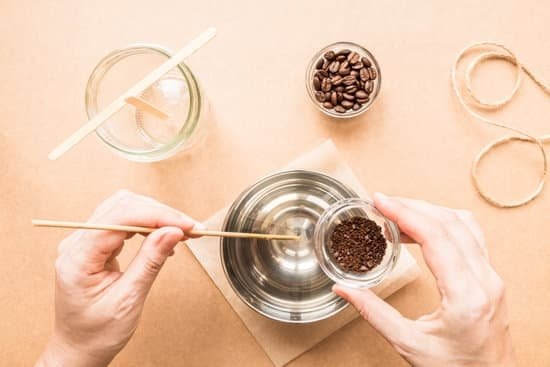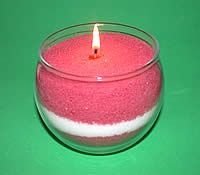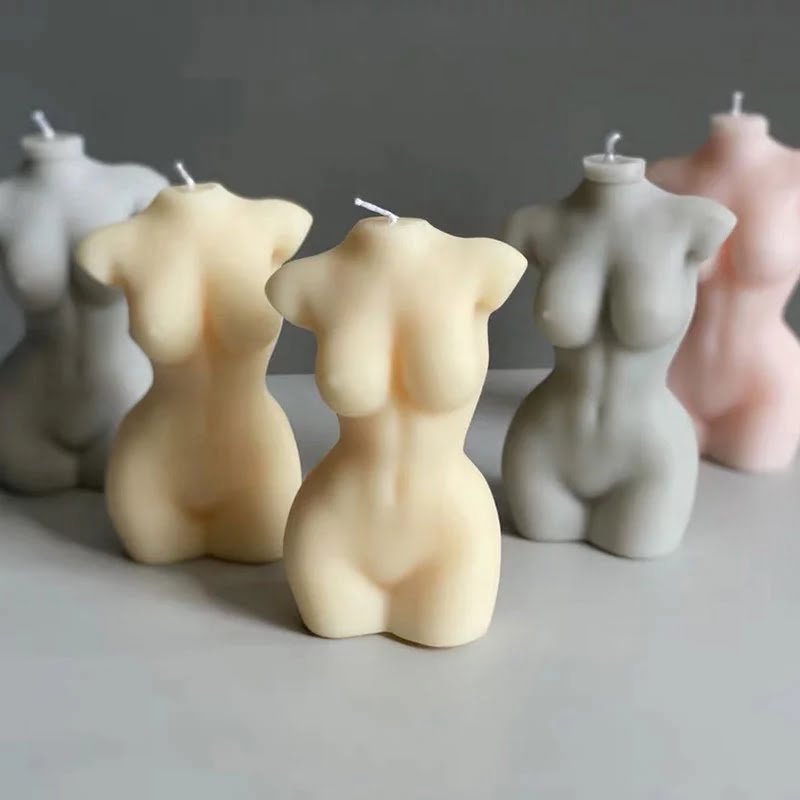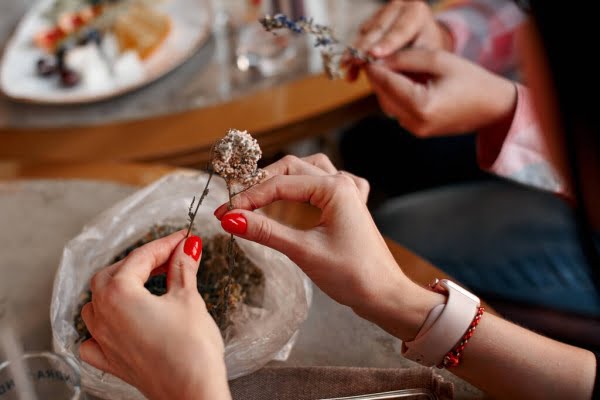The art of candle making has experienced a resurgence in recent years, as more and more people discover the joy and satisfaction of creating their own beautiful, fragrant candles. Whether it’s a hobby or a potential business venture, understanding the costs involved in candle making is essential for success. By learning how to calculate the costs accurately, you can ensure that your candle-making endeavors are both financially viable and personally rewarding.
Candle making is not just about pouring wax into molds and adding a wick; it’s a delicate balance of artistry and scientific precision. The process involves choosing the right ingredients, determining the appropriate size and shape of the candles, and factoring in various other elements that can impact the overall cost.
To begin calculating your candle-making costs, you need to have a clear understanding of the different types of candles available. From classic pillar candles to trendy container candles and elegant taper candles, each type comes with its own set of materials and requirements. Additionally, factors such as size, shape, wax type, fragrance oils, and dyes all contribute to the final cost.
In this article, we will guide you through all aspects of calculating candle-making costs-starting from acquiring essential supplies and equipment to breaking down raw material expenses and overhead costs. We will also discuss labor costs, time management strategies, pricing for profit, potential challenges you may encounter along the way, and tips for optimizing costs.
By mastering the art of calculating candle making costs, you will be equipped with valuable knowledge to make informed decisions about pricing your products for profit. So let’s dive in and explore the world of candle making as both an artistic endeavor and a potential source of income.
Understanding the Basics
When it comes to candle making, understanding the various types of candles and the factors that can affect their cost is crucial. Different types of candles require different materials and processes, and these variations can have a significant impact on the overall cost of candle making. In this section, we will explore the basics of candle types and discuss how factors such as size, shape, and wax type can influence the cost.
Overview of Candle Types
Before delving into cost considerations, it is essential to have a basic understanding of the different types of candles available. The most common types include:
- Pillar Candles: These are freestanding candles that come in various shapes and sizes. They are often used for decoration or creating ambiance.
- Container Candles: As the name suggests, container candles are poured into containers such as jars or tin cans. They are popular for their versatility and ease of use.
- Taper Candles: Taper candles are long, slender candles with a narrow base that widens at the top. They are commonly used for formal occasions like dinners or ceremonies.
Each type has its own unique characteristics and requirements in terms of materials and production methods. It’s important to consider these differences when calculating costs.
Factors Affecting Cost
Several factors can influence the cost of candle making:
- Size: Larger candles generally require more raw materials, resulting in higher costs compared to smaller ones.
- Shape: Unusual or intricate shapes may require specialized molds or additional manual labor, which can increase production costs.
- Wax Type: Different types of wax (such as soy, beeswax, paraffin) vary in price per pound. Additionally, certain waxes may require specific additives or fragrance oils that can add to the overall cost.
Other variables to consider include the type of wick used, the complexity of fragrance or color customization, and any additional decorative elements. Understanding these factors allows candle makers to make informed decisions about the most cost-effective options while still achieving their desired results.
Gathering the Essentials
When it comes to candle making, having the right supplies and equipment is essential for creating high-quality candles. Whether you’re a beginner or an experienced candle maker, it’s important to gather all the necessary items before starting your project. Here are some must-have supplies and equipment that every candle maker should have:
- Wax: The type of wax you choose will greatly affect the quality and cost of your candles. There are several options available, including soy wax, beeswax, paraffin wax, and palm wax. Each type has its own unique characteristics and price points.
- Wicks: Wicks are responsible for creating a steady flame in your candles. They come in different sizes and materials, such as cotton or wood wicks. It’s important to choose wicks that are appropriate for the size and type of candle you’re making.
- Fragrance Oils: Fragrance oils add scent to your candles and come in a wide variety of options. You can choose from popular scents like lavender or vanilla, or get creative with unique combinations. Be sure to choose high-quality fragrance oils that are specifically designed for candle making.
- Dyes: If you want to add color to your candles, dyes are essential. Liquid dyes are commonly used because they easily mix with melted wax, resulting in vibrant colors. Make sure to use dyes that are safe for candle making and won’t affect the burn quality.
- Melting Pot: A melting pot is necessary for melting the wax properly without scorching it. You can use a double boiler setup or invest in a dedicated melting pot designed specifically for candle making.
- Thermometer: To ensure that your wax reaches the correct temperature during the melting process, you’ll need a thermometer. This will help prevent overheating or underheating of your wax, which can affect the quality of your candles.
- Molds: Molds come in different shapes and sizes and are used to give your candles their final shape. There are various options available, including metal, plastic, and silicone molds. Choose molds that suit the type of candle you’re making and ensure they are of good quality to achieve professional-looking results.
By having these essential supplies and equipment, you’ll be well-equipped to start your candle making journey. It’s important to invest in high-quality items as they will not only enhance the quality of your candles but also save you money in the long run.
Breaking Down Expenses
Understanding the Cost of Raw Materials
To accurately determine the overall cost of candle making, it is essential to break down and calculate the expenses associated with raw materials. These raw materials include wax, wicks, fragrance oils, and dyes, among others. By understanding how to calculate these costs, candle makers can make informed decisions regarding pricing and profitability.
Determining the Quantity Needed
The first step in calculating raw material costs is determining the quantity of each material needed to make a specific type and quantity of candles. This can be done by referring to candle making recipes or formulas that specify the recommended measurements for each ingredient based on batch size.
For example, if you are making container candles and have a recipe that requires 1 pound of wax per 4-ounce container, you would need to calculate how many pounds of wax are needed for your desired production quantity. This calculation would involve considering factors such as the number of containers you plan to fill and any potential waste or overflow during the pouring process.
Evaluating Pricing Factors
Once you have determined the quantity needed for each material, it is important to consider pricing factors when calculating their costs. The prices of raw materials can vary depending on factors such as quality, brand, and supplier. Comparing prices from different suppliers and considering bulk purchasing options can help in reducing costs without compromising on quality.
Additionally, it’s worth noting that certain materials may have a higher cost due to their specialty or unique properties. For instance, fragrance oils with complex scents or natural ingredients may come at a premium price compared to more basic scents. By understanding these pricing factors for each raw material component, candle makers can accurately assess their overall expenses and make adjustments accordingly.
Calculating raw material costs is an essential part of understanding the complete picture when it comes to candle making expenses. By breaking down these costs and evaluating pricing factors, candle makers can ensure that their pricing strategies align with their desired profit margins and business goals.
Overhead Costs
In the process of calculating candle making costs, it is essential to consider overhead costs. These miscellaneous expenses can play a significant role in determining the overall cost and profitability of your candle making business. In this section, we will explore the various overhead costs that should be accounted for and provide guidance on how to calculate them accurately.
One important aspect of overhead costs in candle making is packaging materials. This includes containers, jars, boxes, labels, and any other materials used to package and present your candles. The cost of these items can vary depending on factors such as quality, size, and design. It is crucial to factor in the expenses for packaging materials when calculating the cost per candle as it directly affects the overall production cost.
Another overhead cost to consider is shipping expenses. Whether you sell your candles online or through retail stores, there will be costs associated with shipping and delivery. This includes packaging supplies specifically for shipping purposes, postage or courier fees, and any other related charges. Carefully calculating these expenses will give you a clear picture of how much each candle’s production cost increases due to transportation.
To accurately assess the overall candle making cost, it is important not to overlook additional miscellaneous expenses such as labeling materials and equipment maintenance costs. Labels are essential for branding and providing information about your candles to customers. These may include labels for safety warnings, fragrance details, and product descriptions. Additionally, equipment maintenance costs should be taken into account as regular servicing and repair are necessary to keep your equipment functioning optimally.
By accounting for these overhead costs along with raw material expenses discussed in previous sections, you can determine a more accurate calculation for each candle’s production cost. Having a clear understanding of these miscellaneous expenses allows you to make informed decisions regarding pricing strategies without compromising on quality or profitability.
| Overhead Cost | Description |
|---|---|
| Packaging Materials | Includes containers, jars, boxes, labels, and other materials used for packaging and presentation. |
| Shipping Expenses | Covers the cost of shipping supplies, postage or courier fees, and related charges. |
| Labeling Materials | Includes costs associated with safety warning labels, fragrance details labels, and product description labels. |
| Equipment Maintenance Costs | Expenses for regular servicing and repair of equipment used in candle making. |
Time is Money
Candle making is not only about the raw materials and equipment; there is an important aspect that often gets overlooked – labor costs and time management. As a candle maker, it is crucial to value your time and factor it into the overall cost of producing candles.
To accurately calculate labor costs, start by tracking the time spent on each stage of the candle making process. Consider activities such as preparing the wax, melting it, adding fragrance oils or dyes, pouring the wax into molds, attaching wicks, and any additional steps required for finishing touches or packaging. By recording the time spent on each task, you can get a clear understanding of how much time goes into making each candle.
Once you have determined the total labor hours spent on producing a specific type and quantity of candles, it’s essential to assign an hourly rate to calculate labor costs accurately. The hourly rate should be based on various factors such as your experience level, skillset, market demand, and what you believe your time is worth. Consider researching industry standards to ensure your pricing aligns with market expectations.
Efficient time management plays a vital role in maximizing profitability as a candle maker. Streamlining your processes and optimizing workflow can help minimize wasted time and increase productivity. One way to do this is by creating a detailed production schedule or checklist that outlines each step involved in candle making. This will help you prioritize tasks, manage your time effectively, and ensure that no aspect of production is overlooked.
Remember, while it’s crucial to factor in labor costs when calculating the overall cost of candle making, it’s also essential to find a balance between competitive pricing and profitability. By valuing your time appropriately and implementing efficient time management strategies, you can optimize labor costs while delivering high-quality candles to meet customer demands.
Pricing for Profit
Determining the selling price of your candles is a crucial step in ensuring profitability in your candle making business. Pricing your candles too low can result in financial losses, while pricing them too high may lead to limited sales. Therefore, it’s important to find the right balance by applying a suitable markup that covers all your costs and allows for a reasonable profit.
When determining the selling price of your candles, it’s essential to take into account both the direct costs and the indirect costs associated with producing and selling your product. Direct costs include the raw materials used in making the candles, such as wax, wicks, fragrance oils, and dyes.
These costs can be calculated by adding up the individual prices of each component used in a single candle. It’s important to regularly review and compare prices from different suppliers to ensure you are getting the best deals on these materials.
In addition to direct costs, you should also consider indirect costs or overhead expenses when determining the selling price of your candles. These expenses include packaging materials, labels, shipping costs, marketing expenses, and any other miscellaneous costs associated with running your candle making business. Be sure to keep track of all these expenses accurately as they contribute significantly to the overall cost of production.
Once you have calculated both your direct and indirect costs, you can determine an appropriate markup for your candles. This markup should consider not only covering all your expenses but also allowing for a reasonable profit margin.
Consider factors such as market demand, competitor prices, and perceived value when setting your selling price. It may be helpful to conduct market research or analyze pricing strategies from successful candle making businesses to determine an optimal selling price that will attract customers while maintaining profitability.
Remember that pricing for profit is an ongoing process that requires regular evaluation and adjustment as market conditions change. Keep track of your sales volume and revenue to ensure that your pricing strategy remains effective over time. By carefully considering all cost factors and accounting for a suitable markup, you can determine a selling price that will contribute to the success of your candle making business.
Potential Challenges and Tips for Cost Optimization
One of the potential challenges that candle makers may face when calculating costs is accurately assessing the amount of raw materials needed for each batch of candles. It can be difficult to estimate the exact amount of wax, wicks, fragrance oils, and dyes required, especially when starting out. This can lead to either over or underestimating the quantity needed, resulting in wasted materials and increased costs.
To overcome this challenge, it is important to carefully measure and record the amount of each raw material used for each batch of candles. Keep track of the weight or volume of wax, number of wicks used, and the quantity of fragrance oils and dyes added. By consistently recording these measurements and comparing them to your actual usage rate over time, you can refine your estimates and minimize material waste.
Another challenge in cost optimization is finding suppliers that offer competitive pricing without compromising on quality. It is essential to do thorough research to find reliable suppliers who provide high-quality raw materials at reasonable prices. Consider joining candle making communities or forums where fellow makers share their experiences and recommendations for suppliers. Additionally, consider buying raw materials in bulk as this often leads to lower per-unit costs.
Furthermore, it’s essential to regularly review your overhead costs such as packaging materials, labels, and shipping expenses to identify areas where you can optimize spending. Look for opportunities to source more affordable packaging solutions without sacrificing aesthetic appeal or quality. Explore different options for labeling that may be less expensive while still conveying necessary information about your candles’ ingredients and safety precautions. Additionally, make sure you are utilizing cost-effective shipping methods and negotiating favorable rates with shipping carriers.
By addressing these potential challenges head-on and implementing effective cost optimization strategies, candle makers can maximize profitability without compromising on quality. The key is continuous improvement through careful measurement, research on suppliers, and regular evaluation of overhead costs. With practice and experience, candle makers can master the art of calculating their candle making costs while honing their skills as entrepreneurs in the industry.
Conclusion
In conclusion, mastering the art of calculating candle making costs is an essential skill for anyone engaged in this hobby or business venture. By understanding the basics of different types of candles and the factors that affect their cost, as well as gathering the necessary supplies and equipment, you can accurately determine the expenses involved in your candle making endeavors.
Calculating raw material costs involves considering the pricing factors for components like wax, wicks, fragrance oils, and dyes. It is also important to account for overhead costs such as packaging materials, labels, and shipping expenses to have a comprehensive understanding of the overall candle making cost.
Furthermore, valuing your time as a candle maker is crucial. Tracking time spent on each stage of candle making and factoring in labor costs will ensure that you are pricing your products correctly to cover all expenses.
Ultimately, pricing for profit by adding a suitable markup allows you to determine the selling price that ensures both competitiveness in the market and profitability for your business. However, it is important to be aware of potential challenges and constantly strive for cost optimization without compromising on quality.
By applying the knowledge gained from this article, readers can confidently calculate their candle making costs and make informed decisions about their business ventures. Mastering this art will enable them to create high-quality candles while maximizing profitability and success in this growing industry.
Frequently Asked Questions
How do you calculate cost per candle?
To calculate the cost per candle, you need to consider several factors. First, determine the total cost of all the materials used to make the candles, such as wax, wicks, fragrance oils, dyes, and containers. Then, add up any additional costs involved in the process, like packaging or labeling.
Next, calculate the number of candles produced from a given batch. Finally, divide the total cost by the number of candles in that batch to obtain the cost per candle. This calculation allows you to understand how much it costs you to produce each individual candle.
What is the formula for candle making?
The formula for candle making primarily depends on two main components: wax and fragrance oils. Typically, a simple formula involves measuring out a specific weight or volume of wax and then adding an appropriate amount of fragrance oil based on that measurement.
The exact amounts will depend on your desired outcome and can vary depending on factors like type of wax and desired scent strength. Once mixed together thoroughly and melted according to manufacturer instructions (usually through heat), this formula forms the base for creating homemade candles.
How much should I sell a homemade candle for?
Determining how much to sell a homemade candle for can be influenced by various factors. Firstly, consider your production costs including materials and any other associated expenses like packaging or labels. Then evaluate similar products in the market by researching competitors’ prices for candles with comparable quality and size.
Pricing should also reflect your target market and its demand – higher-end markets may command higher prices than more budget-oriented ones. Additionally, you might want to consider local pricing trends and customer preferences when determining an appropriate selling price for your homemade candles. Always remember that profitability should be balanced with competitiveness in order to attract customers while generating a profit margin that aligns with your business goals.

Welcome to my candle making blog! In this blog, I will be sharing my tips and tricks for making candles. I will also be sharing some of my favorite recipes.

